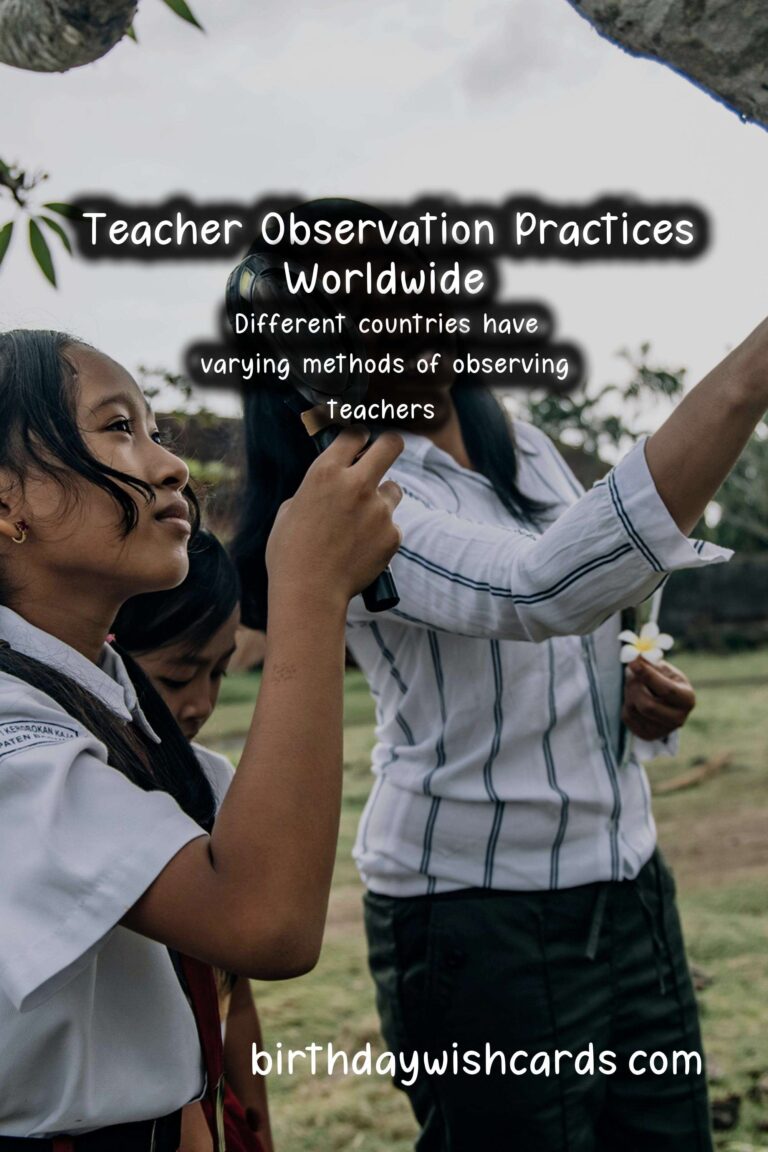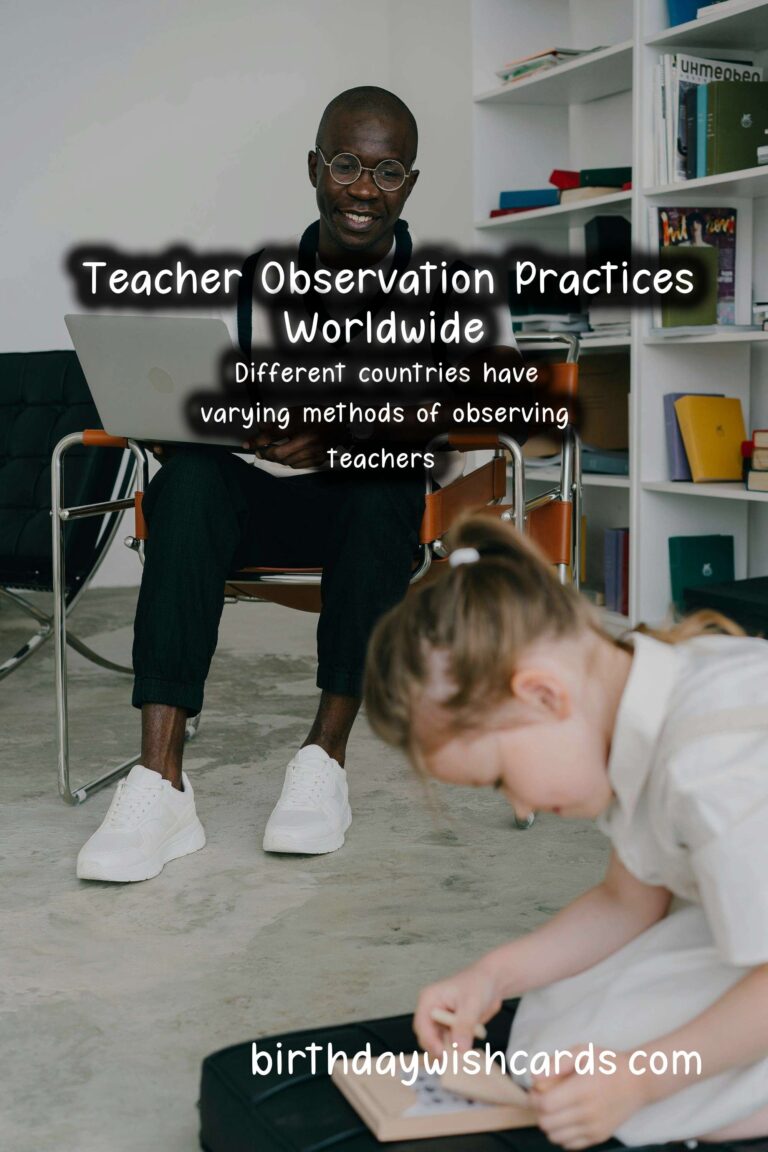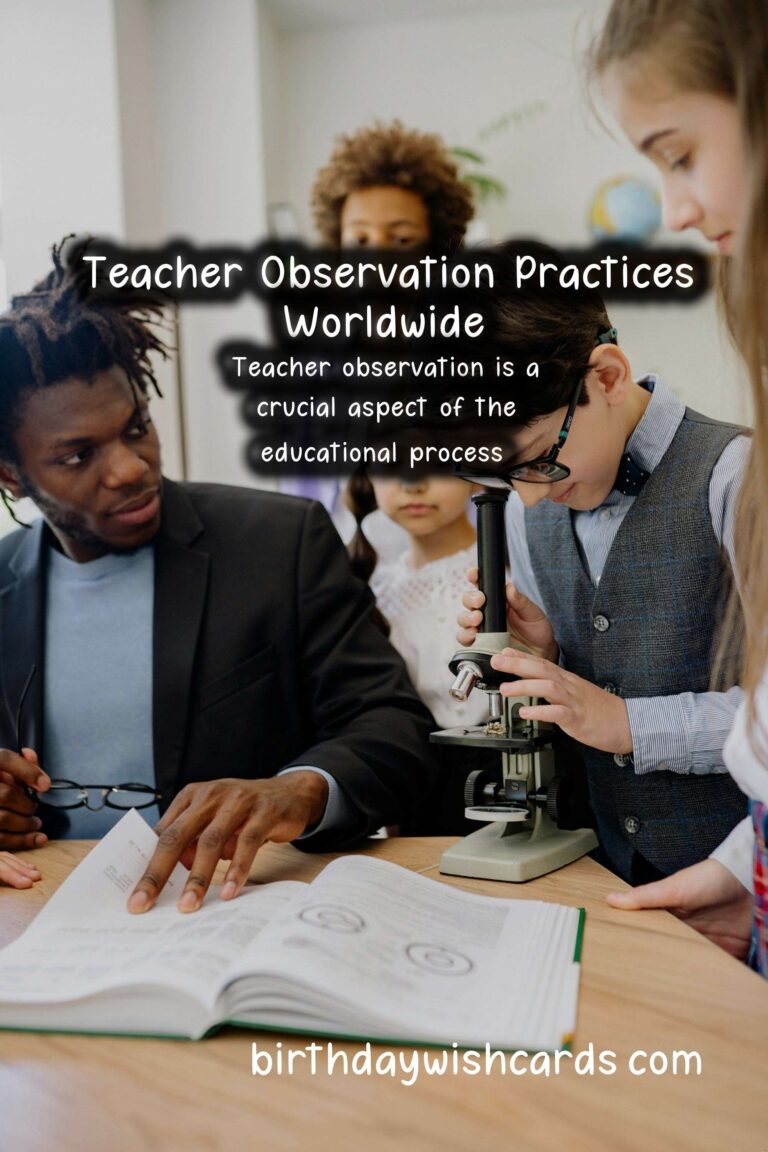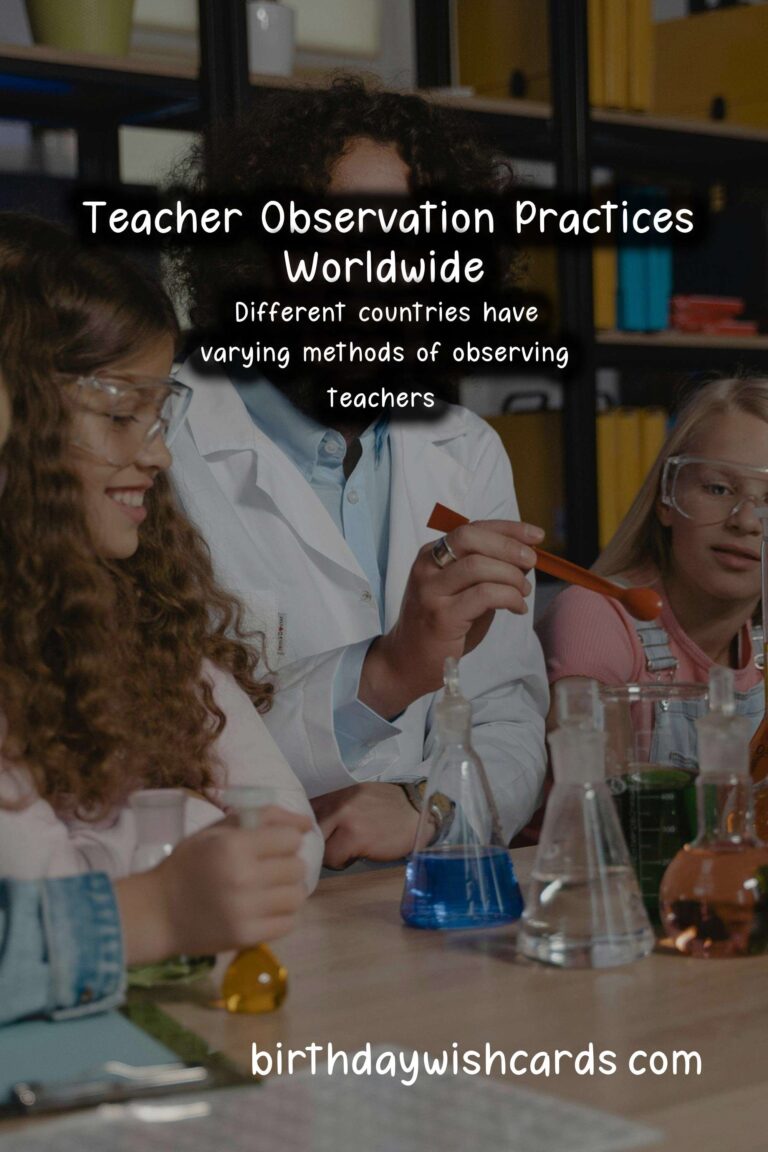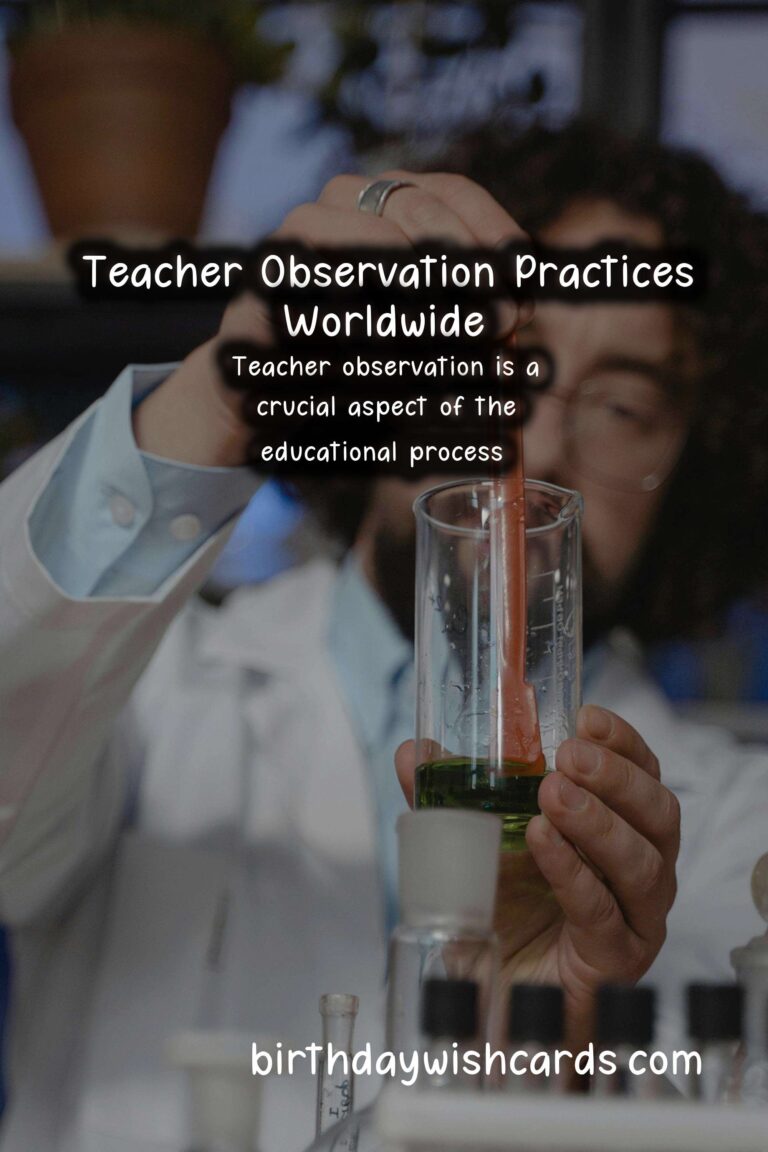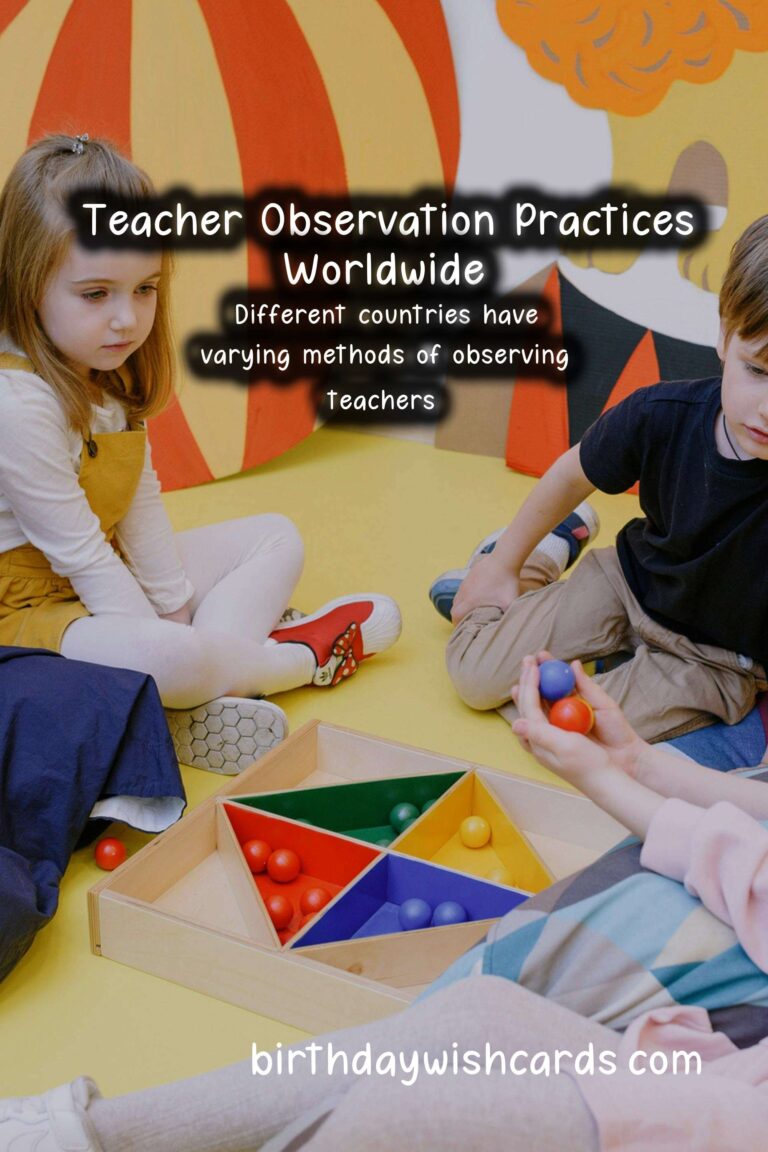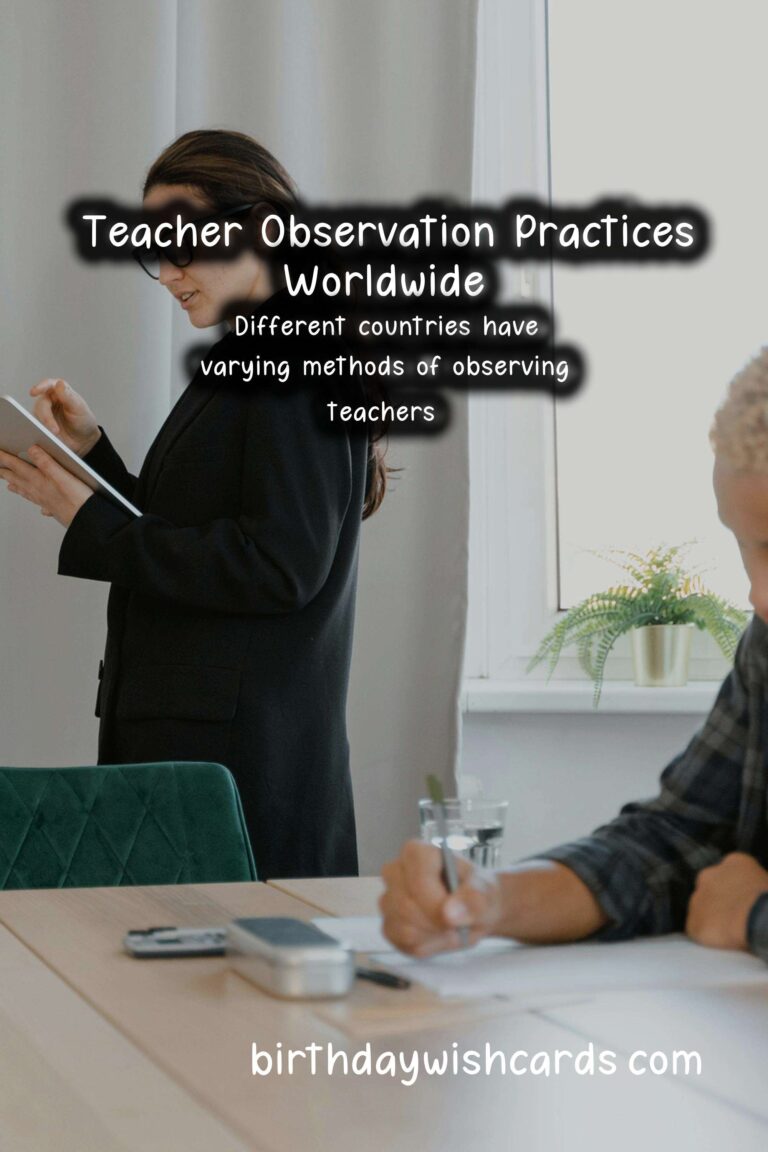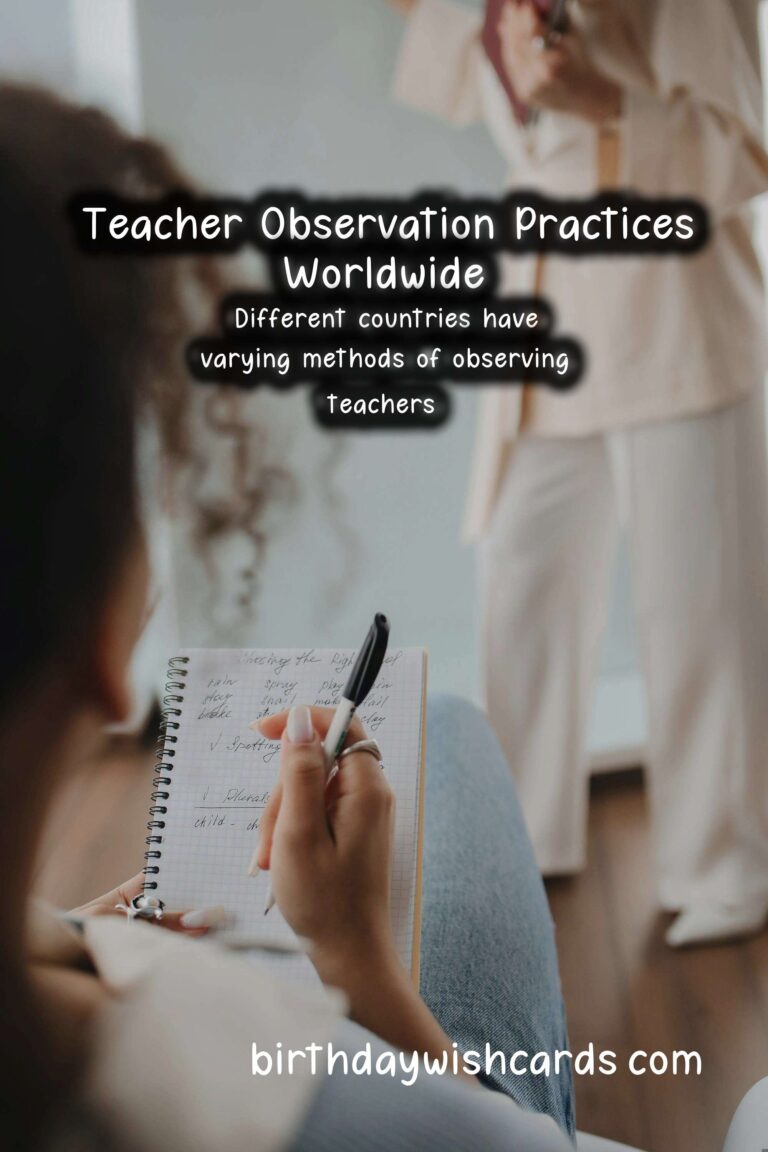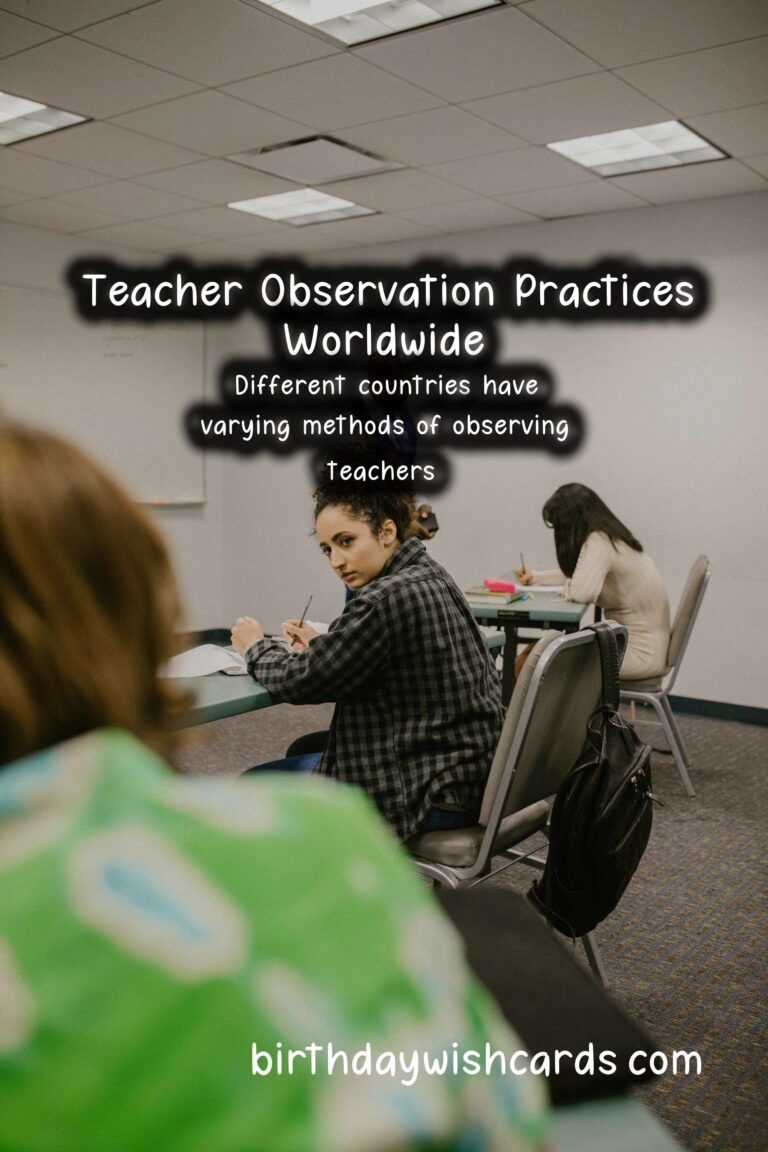
Teacher observation is a crucial aspect of the educational process, ensuring that effective teaching practices are recognized and improved upon. Different countries have varying methods of observing teachers, influenced by their unique educational policies, cultural perspectives, and learning environments. In this article, we will explore how teachers are observed across several countries and the implications these methods have on teaching and learning.
The Importance of Teacher Observation
Teacher observation serves several vital functions in the educational landscape. It allows for the assessment of teaching effectiveness, provides feedback for professional development, promotes accountability, and ultimately, aims to enhance student learning outcomes.
By examining these practices globally, we can glean insights into what might work best in our own educational contexts.
United States: A Mixed Approach
In the United States, teacher observation has gained significant attention in recent years, particularly with the introduction of new evaluation systems. Observations often include a combination of both formal and informal assessments, where administrators and peers observe classroom activities.
Formal evaluations typically involve standardized rubrics that focus on specific criteria, such as instructional strategies and classroom management. These evaluations are often conducted at least once per year to provide comprehensive feedback to educators.
Finland: A Peer Review Model
Finland is often cited as a leader in education, and its approach to teacher observation reflects this excellence. The Finnish model emphasizes collaborative practices, where teachers engage in peer reviews.
In this system, teachers observe each other’s lessons, providing constructive feedback that is geared towards professional growth. This method fosters a culture of trust and support among educators, contributing to their high performance and student success.
Singapore: Structured Mentorship Programs
Singapore’s educational system is well-regarded internationally, and part of its success can be attributed to its structured mentorship programs for teachers. New teachers are paired with experienced mentors who observe their teaching and provide guidance.
This observation process is comprehensive and includes scheduled visits, where mentors focus on specific areas for improvement. Mentorship not only aids in professional development but also enhances instructional quality across the board.
Japan: Lesson Study
In Japan, the concept of ‘Lesson Study’ is a common practice where teachers collaboratively plan a lesson, observe it being taught, and then discuss the outcomes.
This cycle allows teachers to reflect on their practices together, share insights, and make necessary adjustments based on observed student learning. The focus here is on continuous improvement, making it a powerful method for professional development.
Canada: Focus on Self-Reflection
In Canada, teacher observation often emphasizes self-reflection. Many Canadian educators participate in self-observation, where they record their lessons and review them critically.
This approach encourages teachers to be introspective and evaluate their own practice, fostering growth through personal insight. Additionally, formal observations by peers and administrators are also utilized to provide structured feedback.
Australia: National Standards and Assessment
Australia’s approach incorporates national standards which guide teacher observation and assessment. Schools are required to align observation practices with these standards to ensure quality teaching.
Teachers often receive feedback through peer reviews and classroom observations that align with the Australian Professional Standards for Teachers, which aim to support and promote effective teaching practices.
Implications of Teacher Observation Practices
Across these diverse methods of teacher observation, several key implications emerge. First, the role of collaboration and support is paramount. Observing peers and engaging in dialogue significantly enhances the professional growth of teachers.
Additionally, the integration of self-reflection as a practice allows educators to take ownership of their own development, leading to more personalized growth paths.
Lastly, providing structured feedback based on observation fosters an environment of accountability and excellence in teaching.
Conclusion
Ultimately, observing teachers is a multifaceted practice that varies greatly worldwide. While each country employs unique methods suited to their culture and educational philosophy, the common goal remains the same: improving teacher effectiveness to enhance student learning outcomes.
By understanding these different approaches, educators and policymakers can work toward developing more effective observation practices that align with their specific educational contexts.
Teacher observation is a crucial aspect of the educational process. Different countries have varying methods of observing teachers. 
